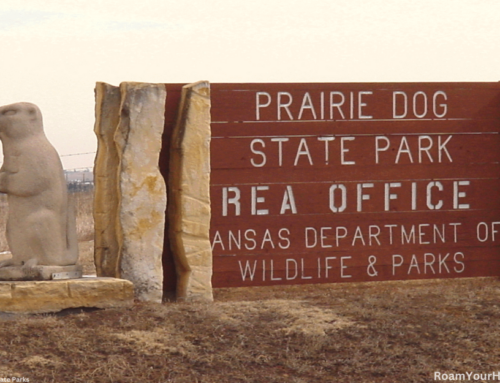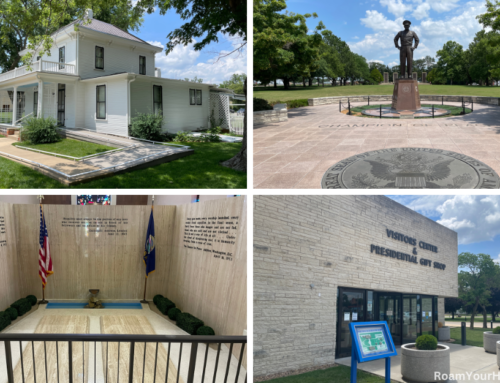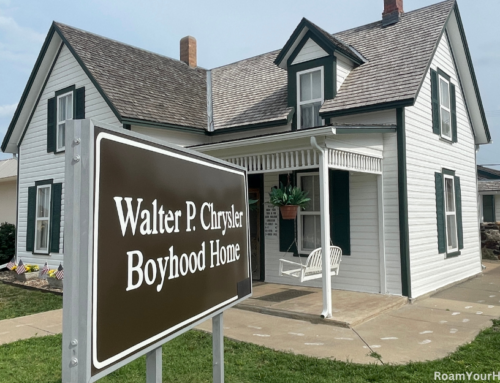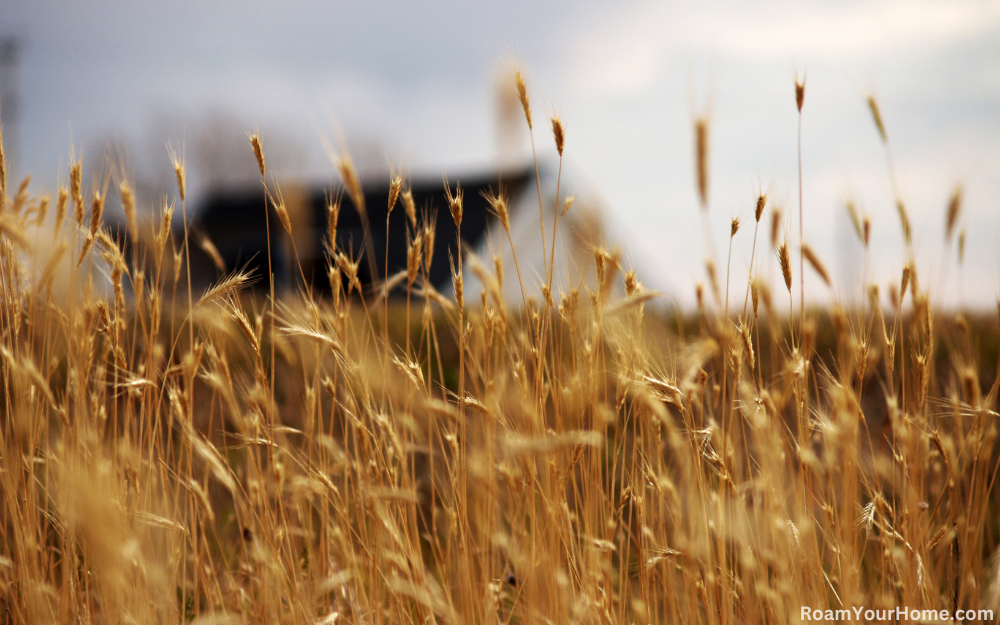
Explore Nicodemus National Historic Site
Nicodemus National Historic Site is in rural Graham County, Kansas. The site preserves and protects the oldest and only remaining Black settlement west of the Mississippi River, founded after the Civil War. Today the town of Nicodemus is a tiny spot on the map with a dwindling population. But at its peak, the community had a thriving population of nearly 600 people.
Nicodemus: A promised land for former slaves
“Go to Kansas.” Nicodemus was founded in 1877 and promoted as a “Promised Land” for formerly enslaved people. These families were ex-slaves that were only removed from slavery by a little over a decade. The opportunity to own land and start a self-sufficient black community was a risk for the many who trekked to northwestern Kansas. Recruitment posters proclaimed Nicodemus would be “The Largest Colored Colony in America.” Another advertised All Colored People who wanted to go to Kansas in September 1877 could do so for $5.00. That covered the cost of getting there. The first wave of 350 formerly enslaved people and their families arrived from Lexington, Kentucky, later that month. They found a land free of bigotry they knew in the reconstruction era South.
But in Kansas, they found new struggles. The settlers grew up in the green rolling hills of Kentucky. The parched prairie of Kansas was shocking.
“When we got in sight of Nicodemus, the men shouted, ‘There is Nicodemus!’ Being very sick, I hailed this news with gladness. I looked with all the eyes I had. I said, ‘Where is Nicodemus? I don’t see it.’ My husband pointed out various smokes coming out of the ground and said, ‘That is Nicodemus.’ The families lived in dugouts… The scenery was not at all inviting, and I began to cry.” – Willianna Hickman, Nicodemus settler.
The land was an endless sea of prairie, the far majority devoid of any material suitable for building. Many earlier settlers to Nicodemus and the surrounding area built dugout shelters in the ground for shelter. Dugout shelters were holes dug into the ground with a sod roof. Others left because the hardship was too much. Those early difficulties were overcome, and the town’s population swelled with black-owned farms. The town would eventually support several churches, a hotel, general stores, a bank, a newspaper, and more.
As quickly as Nicodemus became a spot on the map, it was nearly erased. After a few years of rapid growth, the population of Nicodemus promptly declined. Poor harvests and a railroad that never came through contributed to the decline. The Dust Bowl and Great Depression further led to population decline. The population further declined over the following decades, but the town remains to this day.
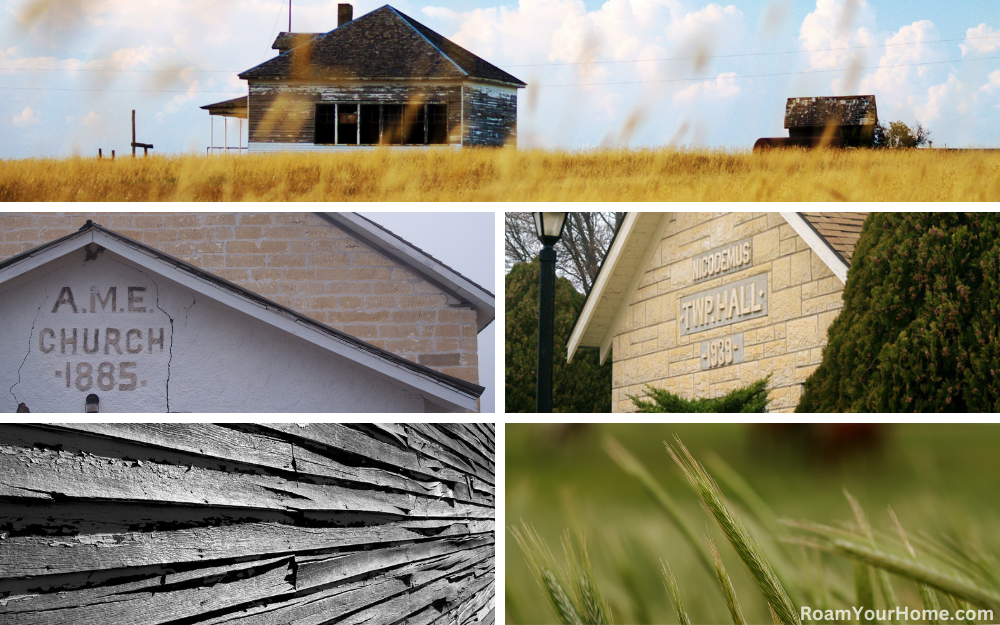
Visiting Nicodemus National Historic Site
There are five historic buildings still standing in Nicodemus. They serve as pillars of the values of the founders and residents of Nicodemus. The Township Hall also serves as the Historic Site’s Visitor Center. It’s open year-round and is the perfect place to start your visit.
Next, head across the street to the St. Francis Hotel. Over the years, the hotels served a variety of purposes, including a post office, schoolhouse, general store, and stagecoach station. Former Green Bay Packer Veryl Switizer was raised in the building during the 1930s and 40s. Veryl would later become a community leader in Nicodemus and an advocate for its preservation.
As more settlers came to Nicodemus, they brought their young children. They quickly saw the need for education and a school for their children. In 1879, the town established its first organized school. The original school was housed in many areas, including dugouts and the St. Francis Hotel. The current school building, School District Number 1 was built in 1918. It was in the 1960s due to low enrollment numbers.
The first A.M.E. Church (African Methodist Episcopal Church) is one of the oldest structures in town. It was built in 1885 by the founders of the town. Today you can tour the church.
The First Baptist Church was established in Nicodemus in 1878 and was the first church established in the town. The church was vital to Nicodemus settlers, who were religious.
The town of Nicodemus’ legacy celebrates a homecoming each year. During the Emancipation Celebration, the town’s population swells by hundreds to celebrate Nicodemus’ heritage and history.
The town of Nicodemus was named after two figures, both of which have intriguing stories. Once from the Bible, the other from an old slave story passed down on plantations from generation to generation. In the Bible, Nicodemus was an early follower of Jesus, mentioned in the Gospel of John. The other was published in song by composer Henry Clay Work.
Nicodemus the slave, was of African birth,
And was bought for a bagful of gold;
He was reckoned as part of the salt of the earth:
But he died, years ago, very old.
‘Twas his last sad request—so, we laid him away,
In the trunk of an old hollow tree:
Wake me up! was his charge, at the first break of day..
Wake me up for the Great Jubilee!
Chorus: The Good Time Coming is almost here! It was long, long, long on the way! Now, run and tell Elijah to hurry up Pomp, And meet us at the gum-tree down in the swamp, To wake Nicodemus today.
He was known as a prophet: at least was as wise..
For, he told of the battles to come;
And we trembled with dread when he roll’d up his eyes,
And we heeded the shake of his thumb.
Though he clothed us with fear, yet the garments he wore
Were in patches at elbow and knee;
And he still wears the suit that he used to, of yore,
As he sleeps in the old hollow tree.
Chorus.
Nicodemus was never the sport of the lash,
Though the bullet has oft cross’d his path:
There were none of his masters so brave or so rash
As to face such a man in his wrath;
Yet his great heart with kindness was filled to the brim..
He obeyed who was born to command;
But he long’d for the morning which then was so dim..
For the morning which now is at hand.
Chorus.
‘Twas a long weary night.. we were almost in fear
That the future was more than he knew:
‘Twas a long weary night.. but the morning is near,
And the words of our prophet are true.
There are signs in the sky that the darkness is gone..
There are tokens in endless array;
While the storm which had seemingly banished the dawn,
Only hastens the advent of day.
Chorus.

